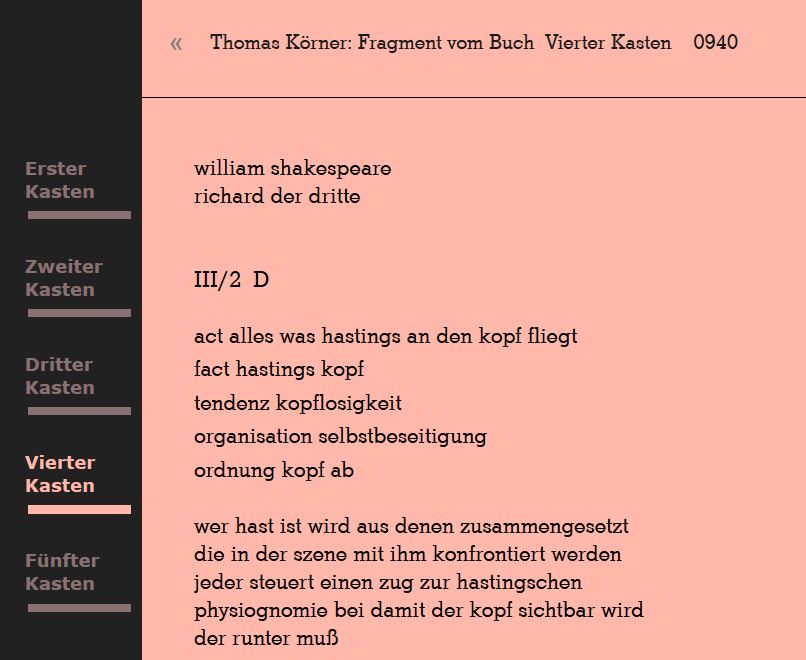Ensembling according Körner means intensive reading, dismantling metaphors, phrases and words and reassembling all to new meaning.
Körner distinguishes between horizontal and vertical assembly. For the vertical assembly he finds the formula: a-f-t-org-ord-r / sv or bwz: act fact tendency organization order result SV Seinssachverhalt or BWZ status of Consciousness. This formula specifies the ratio of one card file to one or more other cards. Act (as a point of space) is the elementary particle of the ensemble, with fact the relation of several acts to each other is described, wihich shows their trend. The tendency organizes several facts to each other, ultimately they are in order. Körner himself gives practical literary examples for the application of the formula in the Fragment of the Book Fourth Box, where he noted his reading findings on Shakespeare’s Richard III, i.e. on index card 0940:

Further examples you can find in the Fragment of the Book Fourth Box.

